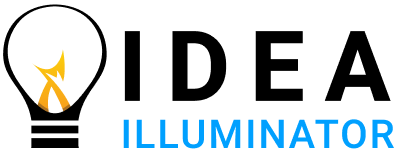Options trading strategies like covered calls and cash-secured puts stand out as reliable income generators, appealing to investors seeking steady returns with defined risks. Both leverage option premiums to boost portfolio yields, but they differ in execution, market outlook, and psychological fit. An analytical perspective reveals their equivalence in certain scenarios, selling a cash-secured put mirrors a covered call at the same strike, but nuances in delta exposure, volatility sensitivity, and capital deployment make one more suitable depending on your style. In current low-volatility environments, with the volatility index around 15.5 signaling calm markets, these strategies shine by harvesting theta decay while minimizing vega risks. We’ll dissect their mechanics, compare pros and cons, and provide data-driven insights to help align them with your risk tolerance, bullishness, and income goals.
Core Mechanics of Covered Calls
A covered call involves owning 100 shares of an underlying stock and selling a call option against it, typically out-of-the-money to allow some upside. The premium collected upfront becomes immediate income, effectively lowering your cost basis. For instance, if you hold a stock at $100 and sell a $105 call for $3, your net cost drops to $97, yielding 3% if unassigned. Analytically, delta plays a key role: the stock’s full delta (1.0) minus the call’s delta (say 0.4) nets a 0.6 delta position, maintaining bullish exposure. Theta decay accelerates profits as expiration nears, especially in flat markets. Gamma, however, introduces convexity, sharp upside moves could lead to early assignment, capping gains. This strategy fits conservative investors who own blue-chips like PepsiCo or Walmart, where stable dividends complement premium income. Current market data shows average annualized yields around 8-12% on such stocks, outperforming bonds in low-rate regimes.
Core Mechanics of Cash-Secured Puts
Conversely, a cash-secured put requires setting aside cash equal to the strike price times 100 shares while selling a put option, obligating you to buy the stock if it drops below strike. The premium is your income; if the stock stays above strike, it expires worthless, yielding the full amount. Take a $95 put sold for $2 on a $100 stock: breakeven is $93, with max profit at $200 per contract. Delta here is negative (around -0.3 for out-of-the-money), creating a mildly bullish stance since assignment buys at a discount. Vega sensitivity favors low-volatility periods, as implied volatility contractions boost put values less dramatically. This appeals to value hunters eyeing stocks like Ford or Intel, where you’d welcome ownership at reduced prices. Insights indicate yields of 6-10% annualized in stable sectors, with assignment rates below 30% in range-bound markets.
Similarities: Income Generation and Risk Profiles
Analytically, both strategies are synthetically equivalent under the put-call parity theorem: a covered call equals a cash-secured put plus a long stock position, adjusted for dividends and rates. Both collect premiums upfront, benefiting from time decay (positive theta) and short vega (profiting from volatility drops). In low-volatility climates like now, where premiums are moderate but consistent, they generate similar returns, around 1-2% monthly on at-the-money options. Risk is defined: max loss for covered calls is stock depreciation minus premium; for puts, it’s strike minus premium minus current price if assigned. Position sizing aligns via capital allocation, $10,000 secures one put contract on a $100 strike or covers 100 shares for a call. Both fit the wheel strategy: roll covered calls into puts post-assignment, cycling income. Data shows wheel users averaging 15% annual returns in diversified portfolios, blending these for balanced exposure.
Differences: Market Outlook and Directional Bias
The crux lies in outlook. Covered calls suit neutral to mildly bullish styles, as you own the asset and forgo unlimited upside for income. If the stock surges 20%, you’re called away at strike, missing gains, a classic opportunity cost. Cash-secured puts lean neutral to mildly bearish, ideal for accumulating shares during dips without immediate ownership. No upside cap exists pre-assignment, but you tie up cash earning minimal interest. Analytically, compare deltas: covered calls retain positive net delta, thriving in gradual uptrends; puts’ negative delta buffers minor declines but exposes to crashes. In current markets, with tech giants like AMD showing momentum, covered calls capture partial rallies; for energy plays like ConocoPhillips amid supply stability, puts allow entry at supports. Volatility impacts differ: high vega environments inflate premiums but raise assignment odds for calls, while puts benefit from skew (higher put IV).
Risk Analysis: Volatility and Assignment Scenarios
Volatility amplifies risks uniquely. For covered calls, elevated swings increase gamma risk, rapid upsides trigger assignment, forfeiting shares; downsides erode stock value unprotected. With the volatility index at subdued levels, this risk is muted, but stress tests via Monte Carlo simulations show 20% volatility hikes doubling loss probabilities to 15%. Opportunity cost quantifies: if a stock like Pfizer rallies 15% post-earnings, you cap at 5-7% including premium. Cash-secured puts face assignment risk in downturns, forcing purchase at strike amid further drops, max loss if stock goes to zero. However, current low-volatility favors puts, with assignment rates under 20% on staples like Lowe’s. Both suffer from rho in rising rates, but puts’ cash reserves mitigate via interest. Portfolio VaR models recommend 5-10% allocation per trade, capping drawdowns at 2% overall.
Reward Potential: Yield Calculations and Enhancements
Yields hinge on premium capture. Covered calls often edge higher due to dividend additions, PepsiCo’s 3% yield plus 1% monthly premium totals 15% annualized. Analytically, return on capital (premium / stock cost) favors calls in bull markets; puts shine in sideways, as cash earns yields elsewhere. Current data on popular underlyings like Oracle shows call premiums at 2-4% for 30-day expirations, versus 1.5-3% for puts. Enhance via rolling: extend calls on upside to defer assignment; roll puts down on declines for added premium. Wheel integration boosts: post-put assignment, switch to calls for income while holding. Backtests on diversified baskets (tech, consumer, energy) yield 12-18% annually, with Sharpe ratios above 1.0 indicating efficient risk-adjusted returns.
Capital Efficiency and Liquidity Considerations
Capital ties differ markedly. Covered calls demand stock purchase upfront, locking $10,000 for a $100 share; puts secure with cash, offering flexibility to deploy elsewhere if unassigned. In low-rate eras, this favors puts for opportunity cost minimization. Liquidity matters: blue-chips like Walmart boast tight spreads, reducing slippage, 0.1% vs. 1% on illiquids. Analytically, screen via implied volatility rank (IVR >50% for selling); current markets show IVR around 40% on averages, signaling fair pricing. For styles prioritizing liquidity, calls on ETFs like SPY provide diversification; puts suit concentrated bets on undervalued names like Intel.
Psychological Fit: Discipline and Investor Temperament
Style alignment is psychological. Covered calls demand comfort with ownership, bullish types relish dividends but must accept caps, avoiding FOMO during rallies. Analytical minds track net delta to stay engaged. Cash-secured puts fit patient accumulators, viewing assignment as a win (buy low), but require discipline against over-allocation in bears. Both combat greed via rules: exit at 50% profit or roll at 21 days. Current calm markets reduce stress, with fewer assignments fostering confidence. Test via paper trading: simulate 50 trades to gauge emotional fit.
Tax Implications and Portfolio Integration
Taxes influence choice. Covered calls may qualify premiums as short-term gains, but qualified dividends retain benefits; assignment triggers capital gains on stock. Puts treat premiums as short-term, with assignment resetting basis. In tax-advantaged accounts, this is moot. Integrate via allocation: 30% calls for income, 20% puts for entry, rest core holdings. Diversify sectors, tech for growthy calls, staples for defensive puts. Current trends favor puts on cyclicals like Ford amid economic stability.
Case Studies: Real-World Applications
Consider AMD at $150: sell $160 call for $5 (3.3% yield); if assigned, 10% total return. Alternatively, $140 put for $4 secures entry at $136 net. In volatility at 15.5, calls win if stable; puts if dip. For Pfizer at $30: $32 call yields 4%; $28 put 3.5%, fitting income seekers.
Choosing Based on Your Style
Bullish owners prefer covered calls for enhanced yields; opportunistic buyers lean puts for discounted entries. Analytical tools, Greeks modeling, backtesting, guide decisions. In low-volatility now, both thrive, but assess via risk-reward ratios.
Advanced Variations and Hybrids
Collars add puts to calls for protection; diagonal puts spread expirations. Hybrids like poor man’s covered calls use leaps, reducing capital.
Conclusion
Covered calls vs. cash-secured puts boils down to ownership vs. opportunity, bullish vs. accumulative styles. Analytically, both offer 8-15% yields with managed risks, excelling in calm markets. Align with your temperament, backtest rigorously, and diversify for sustained income.

